In today’s busy world, privacy is a highly sought-after feature in both urban and suburban gardens. While fences and walls can provide seclusion, they often lack natural beauty and ecological benefits. Fast-growing hedges are an excellent alternative, offering privacy, shade, and a lush, green aesthetic. Some species also provide flowers, berries, and habitat for wildlife, enhancing both the functionality and visual appeal of your garden. This article explores eight fast-growing hedges that can quickly transform open spaces into private, verdant retreats, with detailed guidance on planting, care, and maintenance.
Why Choose Fast-Growing Hedges?
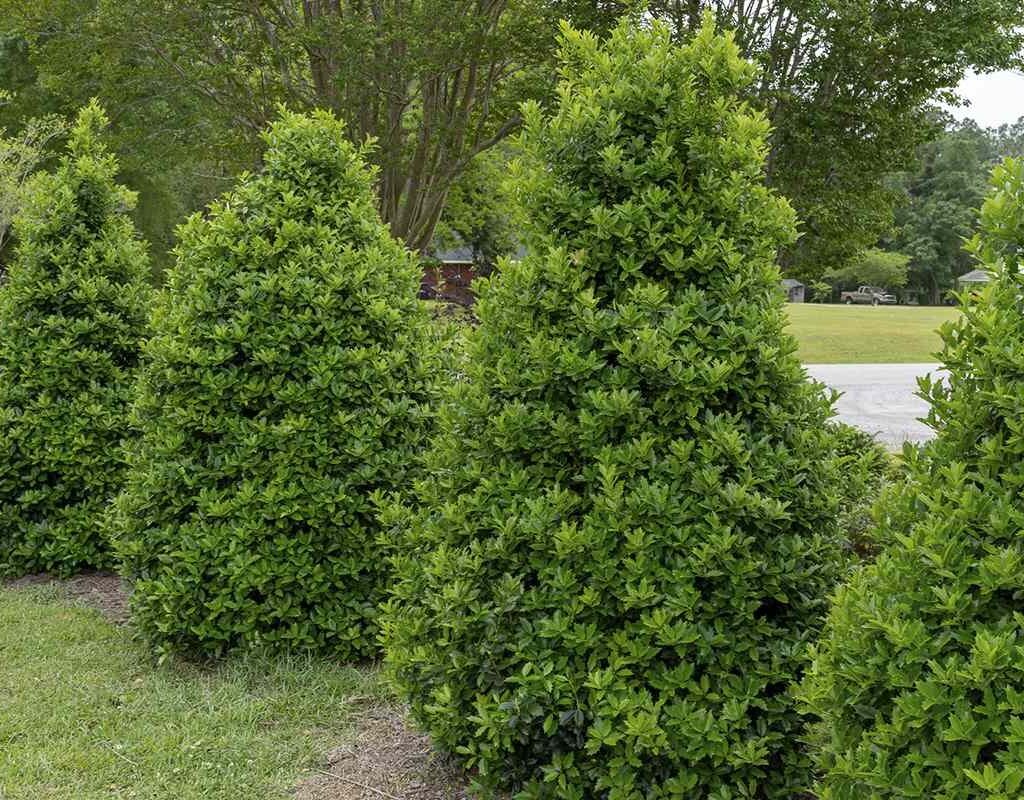
Fast-growing hedges are ideal for gardeners who want immediate results. They offer several advantages:
- Quick Privacy: Certain hedge species can grow several feet per year, creating a natural screen in a short time.
- Environmental Benefits: Hedges provide windbreaks, reduce noise pollution, and create habitats for birds and beneficial insects.
- Aesthetic Appeal: Flowering and evergreen varieties enhance garden beauty year-round.
- Low Maintenance Options: Many fast-growing hedges are hardy, drought-tolerant, and pest-resistant, requiring minimal upkeep once established.
Selecting the right species depends on climate, soil type, sunlight, and intended height.
1. Leyland Cypress (× Cuprocyparis leylandii)
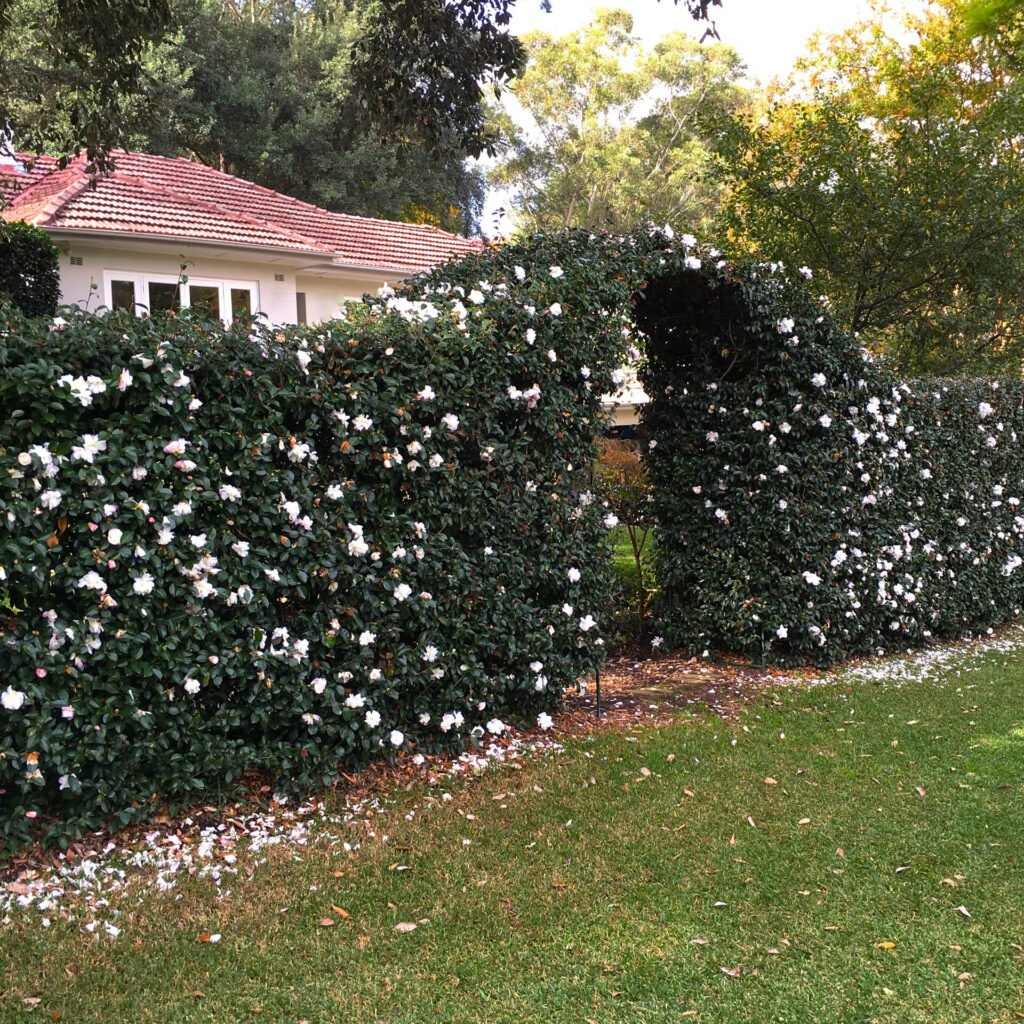
Description
Leyland cypress is a popular evergreen hedge, known for its rapid growth rate of 3–4 feet per year. Its dense foliage creates an effective privacy screen, and it can reach heights of 20–30 feet if left unpruned.
Planting and Care
- Sunlight: Full sun to partial shade.
- Soil: Well-draining soil; tolerates a range of soil types.
- Watering: Moderate, especially during establishment; drought-tolerant once mature.
- Pruning: Trim annually to maintain shape and encourage bushiness.
- Special Tip: Space plants 6–10 feet apart for a dense hedge.
2. Bamboo (Phyllostachys spp.)
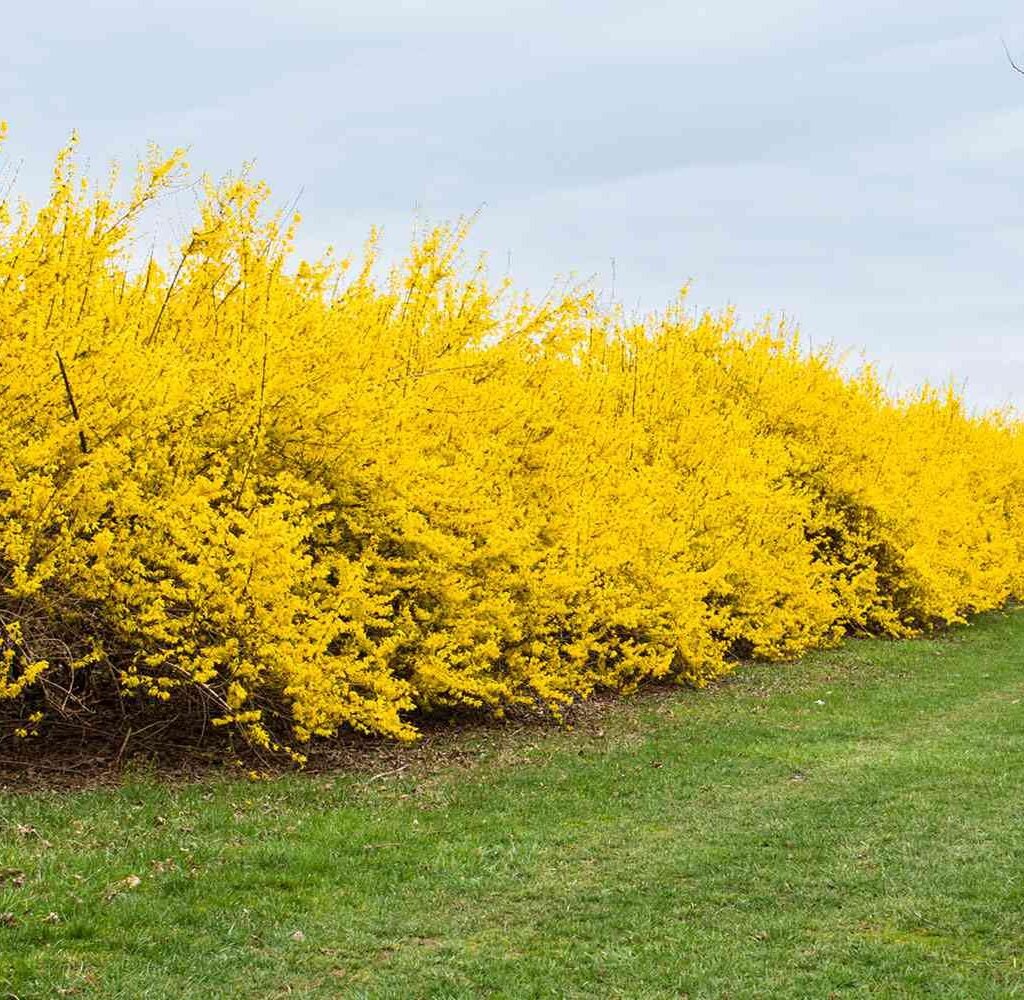
Description
Clumping bamboo is a fast-growing option that can create a tall, green screen in as little as two to three years. It grows vertically with minimal horizontal spread, making it suitable for narrow spaces.
Planting and Care
- Sunlight: Full sun to partial shade.
- Soil: Well-draining, fertile soil.
- Watering: Regular watering, especially during dry periods.
- Maintenance: Install root barriers to prevent invasive spreading.
- Special Tip: Choose clumping bamboo varieties for controlled growth and avoid running types that can take over gardens.
3. Privet (Ligustrum spp.)
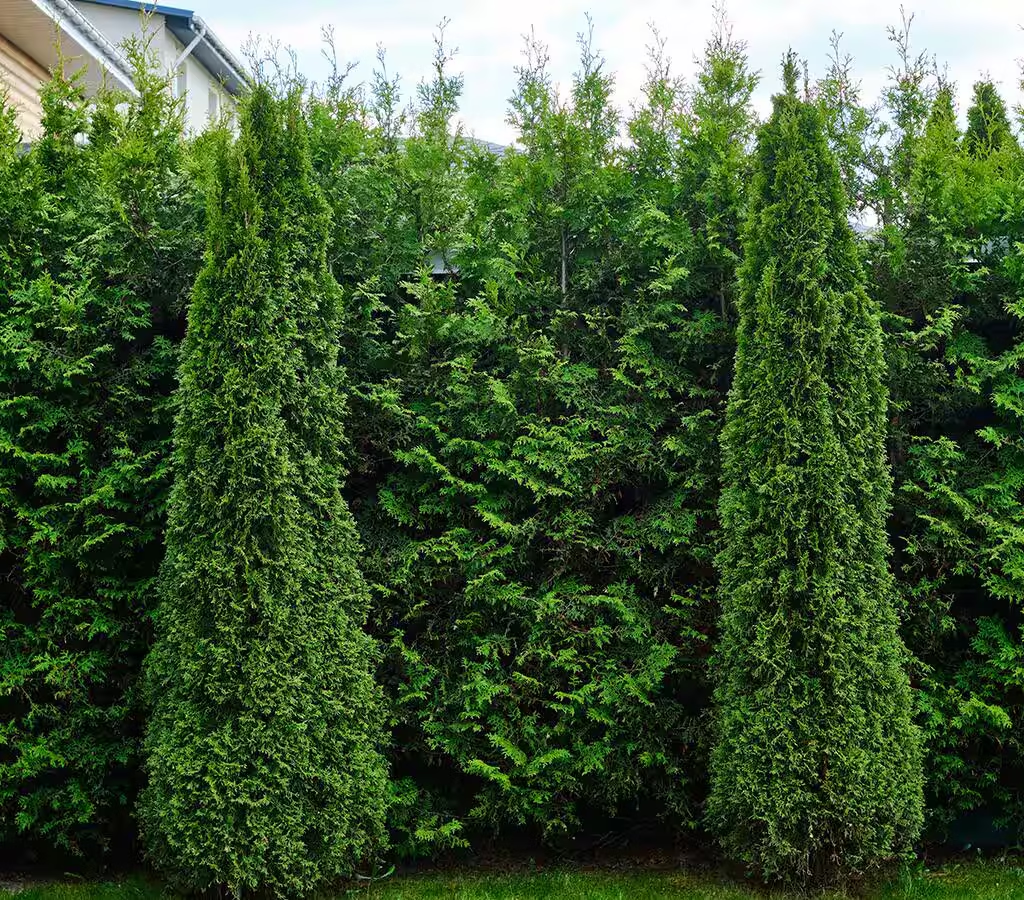
Description
Privet is a classic choice for formal hedges. It grows quickly, up to 2–3 feet per year, and responds well to trimming, making it ideal for shaping and topiary designs. Its dense foliage provides excellent privacy.
Planting and Care
- Sunlight: Full sun to partial shade.
- Soil: Well-draining, moderately fertile soil.
- Watering: Moderate; water deeply during dry spells.
- Pruning: Frequent pruning keeps it dense and shapely.
- Special Tip: Some species produce small white flowers and black berries that attract birds.
4. Photinia (Photinia × fraseri ‘Red Robin’)
Description
Photinia is an evergreen shrub valued for its vibrant red young leaves and glossy green mature foliage. It grows rapidly and forms a dense hedge suitable for privacy.
Planting and Care
- Sunlight: Full sun to partial shade.
- Soil: Well-draining soil; tolerates clay and sandy soil.
- Watering: Regular watering until established.
- Pruning: Trim in late spring or early summer to encourage fresh growth.
- Special Tip: Protect from strong winter winds; red foliage is most vibrant in sunny locations.
5. Hornbeam (Carpinus betulus)
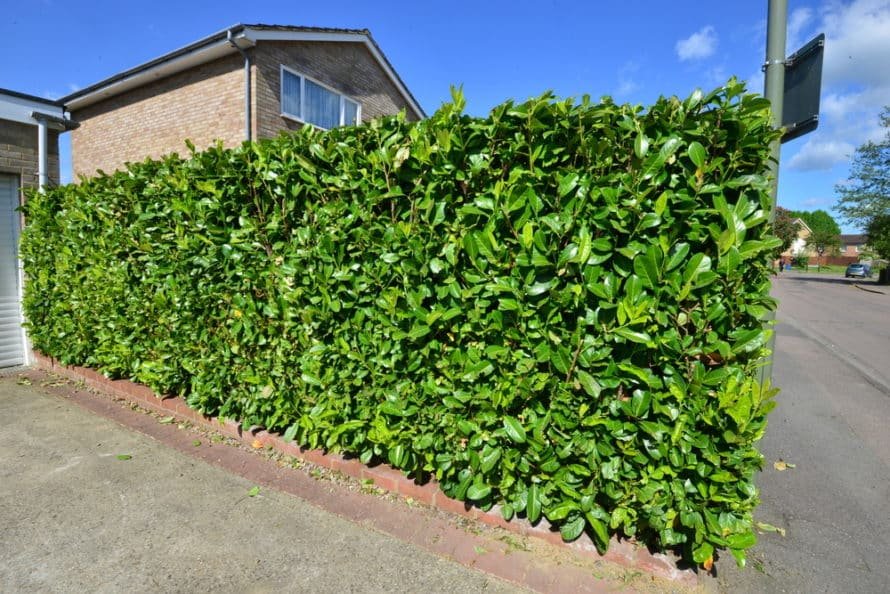
Description
Hornbeam is a deciduous hedge that retains many of its brown leaves through winter, providing semi-privacy year-round. It grows quickly, up to 2 feet per year, and tolerates pruning well.
Planting and Care
- Sunlight: Full sun to partial shade.
- Soil: Moist, fertile, well-draining soil.
- Watering: Moderate; keep soil moist during establishment.
- Pruning: Annual trimming maintains a tidy shape.
- Special Tip: Hornbeam is suitable for formal and informal hedge styles, and its dense growth provides wind protection.
6. Leylandii × Cupressocyparis
Note: This is a hybrid often used synonymously with Leyland Cypress, included for clarity if hybrid varieties are available.
Description
This hybrid grows extremely fast, up to 3–4 feet per year, forming a tall and dense privacy screen. Ideal for areas where rapid coverage is required.
Planting and Care
- Sunlight: Full sun.
- Soil: Well-draining; tolerates a variety of soil conditions.
- Watering: Moderate, especially in the first two years.
- Pruning: Annual maintenance ensures uniformity.
- Special Tip: Suitable for large-scale hedges and boundary screens.
7. Viburnum (Viburnum tinus)
Description
Viburnum tinus is an evergreen shrub with glossy leaves and clusters of small white or pink flowers that bloom from winter to spring. It grows quickly and attracts pollinators while providing privacy.
Planting and Care
- Sunlight: Full sun to partial shade.
- Soil: Well-draining, moderately fertile soil.
- Watering: Moderate; more frequent watering in dry periods.
- Pruning: Prune after flowering to maintain shape.
- Special Tip: Viburnum is deer-resistant and can be used in mixed hedges with other flowering shrubs.
8. Photinia Red Robin Alternative Varieties (Photinia fraseri cultivars)
Description
Alternative Photinia cultivars, such as ‘Pink Marble’ or ‘Little Red Robin,’ provide similar rapid growth and dense foliage, with additional color variations. They form effective hedges with visual appeal.
Planting and Care
- Sunlight: Full sun to partial shade.
- Soil: Well-draining, fertile soil.
- Watering: Regular watering during dry periods.
- Pruning: Maintain shape after flowering for new colorful growth.
- Special Tip: Combine multiple cultivars to create a dynamic hedge with varied foliage colors.
Tips for Establishing a Fast-Growing Hedge
- Spacing: Plant shrubs according to their mature width to ensure a dense hedge without overcrowding.
- Soil Preparation: Enrich planting soil with compost or organic matter for optimal growth.
- Watering: Young hedges require regular watering until established; deep watering promotes healthy root development.
- Pruning: Frequent pruning encourages bushier growth and helps maintain the desired hedge shape.
- Fertilization: Use slow-release fertilizers in spring to boost growth and enhance foliage color.
- Pest Management: Monitor for common pests such as aphids or spider mites and use eco-friendly solutions if needed.
Conclusion
Fast-growing hedges are the perfect solution for creating natural privacy while enhancing the beauty and functionality of your garden. From the dense evergreen foliage of Leyland Cypress to the colorful leaves of Photinia, these eight hedges provide quick coverage, aesthetic appeal, and ecological benefits.
By selecting the right species for your climate, preparing soil properly, and following best practices for watering, pruning, and maintenance, gardeners can enjoy a lush, private, and thriving hedge within just a few years. Whether your goal is to block unwanted views, reduce noise, or create a serene green retreat, these fast-growing hedges transform open spaces into secluded, visually appealing landscapes.
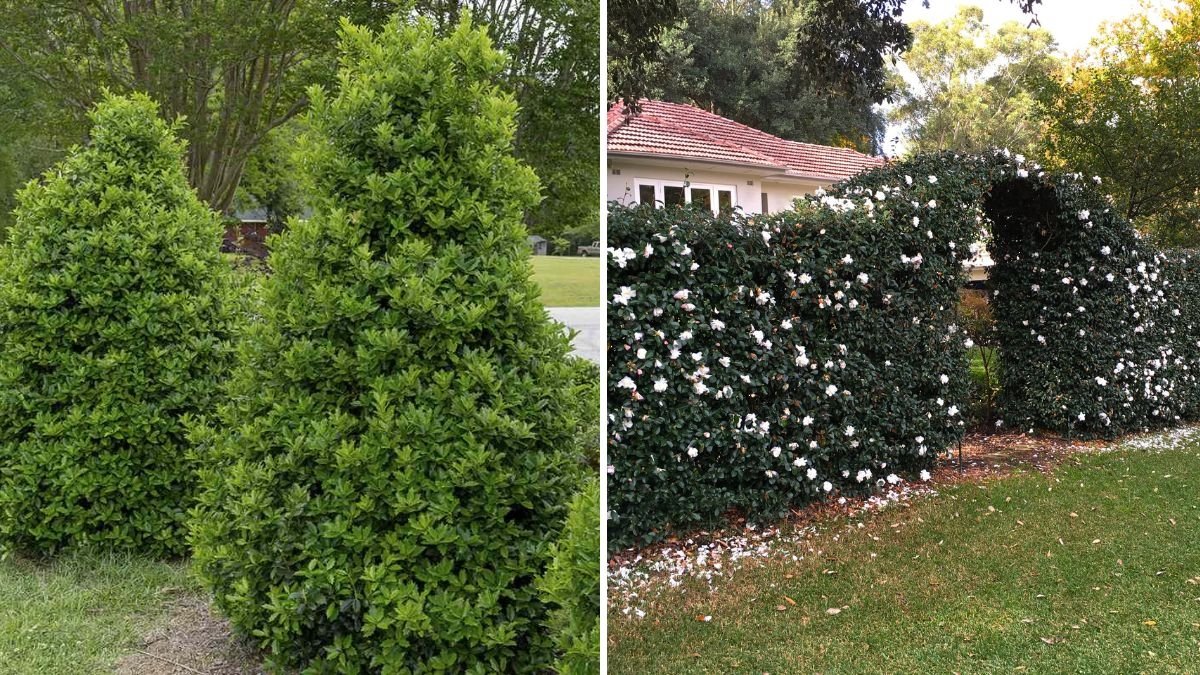
Leave A Comment